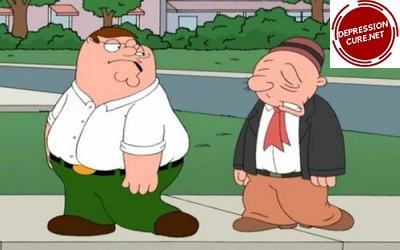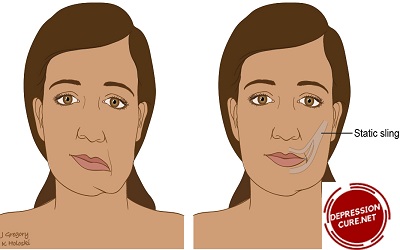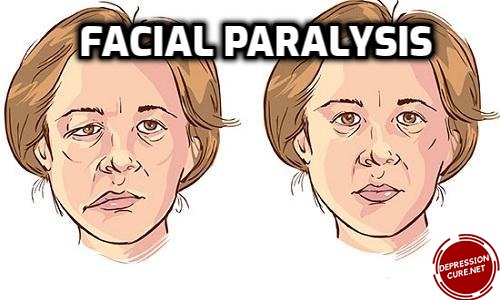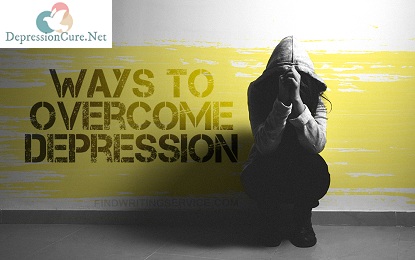What is Facial Paralysis?
When the movement of the facial muscles (such as laughing, speaking and opening the mouth, etc.) is reduced due to any damage in the veins, the condition is called facial paralysis.

This makes the muscles of the face appear weak or hanging. It can occur on one or both sides of the face. Some common causes of paralysis of the facial muscles may include:
- Swelling, redness, or infection in the veins of the face
- Injury to the head (or some heavy blows to the head)
- Tumor formation in the head or neck
- Stroke
Facial paralysis can develop suddenly (for example, in cases of bails palsy) or slowly (in cases of tumors in the throat or head). This, Facial paralysis can last for a short time or even longer, depending on its cause.

Facial Paralysis Symptoms
What are the Symptoms of Facial Paralysis?

Bell?s palsy:
Although facial paralysis is a terrible condition, it does not always mean that you have a stroke. Facial paralysis is mostly tested as Bell’s Palsy. Symptoms of belly palsy may include the following symptoms:
- Paralysis of one side of the face (in very rare cases both sides of the face are affected)
- Loss of control of blinking of a paralyzed eyelid
- Reduced tear from the affected eye
- Pimples
- Change in the feeling of taste
- Vaguely speaking
- Dripping saliva
- Earache or back pain
- Hypersensitivity to the voice in the affected area (inability to bear voice)
- Difficulty eating or drinking
Click Here To Read: 70 Amazing Facts About Dreams
Stroke:
People with stroke often experience symptoms similar to those associated with Bell’s Palsy. However, some additional symptoms are also commonly felt in stroke, which is not felt in belly palsy.
In addition to the symptoms associated with Bell’s Palsy, some other symptoms felt in stroke are:
- Change in level of consciousness
- Feeling confused or confused
- Dizziness
- Decreased physical coordination
- Epileptic seizures
- Change in vision
- Feeling weakness on one side of the body and leg
Sometimes people with stroke also can blink the eyelids of their affected part and move eyebrows. It does not happen in bails palsy.
Sometimes it is difficult to differentiate between stroke and other causes of facial paralysis. If you are experiencing any symptoms of facial paralysis, it is best to take it to the doctor as soon as possible.
If you or someone you know is developing symptoms such as facial paralysis, then contact the doctor without delay.?
Facial Paralysis Causes & Risk Factors

Reasons for paralysis in the face include the following conditions:
Bells Palsy:
Although there is no data available with India in this case, according to the US National Institute of Neurological Disorders & Stroke, Bell’s palsy is the most common cause of facial paralysis.
This condition causes swelling and redness in the facial veins due to which the muscles on one side of the face hang and become weak.?
No one knows the exact cause of Bell’s Palsy. The reason for this may be associated with viral infection in the facial veins. But the good thing is that most people with Bell’s Palsy recover entirely within six months.
Click Here To Read: Top 25 Ways to be a Good Good Father
Stroke:
Stroke is the most severe cause of facial paralysis. Facial paralysis occurs during a stroke; the nerves that control the facial muscles are damaged in the brain.
Depending on the type of stroke, brain cells are either damaged due to lack of oxygen or due to excessive pressure in the brain due to excessive bleeding. In both these cases, the brain cells are destroyed in a single minute.
Other reason:
Other reasons that cause weakness and paralysis in the facial muscles may include:
- Skull-bone fracture or injury
- Facial injury
- Head or neck tumor
- Middle ear infection or other ear injuries
Lyme disease is a disease associated with a bacterial infection that spreads in humans by insect bites.
Ramsay-Hunt Syndrome, a reactivated viral condition that affects the facial veins.
Autoimmune diseases such as multiple sclerosis that affect the brain and spinal cord, Guillain-Barr syndrome. This disease affects the nervous system.
Some children may have facial paralysis temporarily from birth. Ninety percent of children suffering from this condition recover on their own without treatment. Babies may also have facial paralysis during delivery due to some congenital problems such as Moebius syndrome and Melkersson-Rosenthal syndrome.
Diagnosis of Facial Paralysis

How is Facial Paralysis Tested?
Whatever symptoms you are feeling, definitely tell them to the doctor and if you have any other disease or problem, then also inform the doctor about it.
The doctor may ask you to try moving your facial muscles, such as moving your eyebrows, closing your eyes, smiling, and frowning. Electromyography, imaging scans, and blood tests, etc. tests can help your doctor to know why your face is paralyzed.
Click Here to Read:- 20 Things To Know If You Love Someone With Anxiety
Facial Paralysis Treatment

How is Facial Paralysis Treated??
Treatment of Bell’s Palsy:
Most people with Bell’s Palsy recover on their own without treatment. However, studies suggest that taking oral steroids (such as prednisone) and antiviral drugs can increase your chances of recovering completely.
Some physical therapies make your muscles strong and prevent them from getting damaged permanently.
For those who are not able to recover completely, cosmetic surgery can help to correct conditions such as eyelashes that are not opening and closing correctly and crooked smiles.
Damage to the eye is the most significant potential risk of facial paralysis. Bell’s palsy may prevent one or both eyes from closing completely.
When the eyelids are not able to blink regularly, the cornea begins to dry up or other external particles in the eye, which can permanently damage the eye.
People who have facial paralysis should use Artificial Tears several times a day and use lubricants substances for their eyes at night. Apart from this, one may need to wear a special plastic moisture chamber to keep the eyes safe and moist.?

Treatment of Stroke:
The treatment of facial palsy caused by stroke is similar to the treatment of common stroke. If you have recently had a stroke, a particular stroke therapy is used for you to destroy the blood clots that cause a stroke.
If the stroke has happened long ago, doctors treat you with future brain damage prevention drugs. Stroke is a very painful condition. If you or someone you know has this problem, they should be taken to the doctor as soon as possible.?
Other Types of Facial Paralysis:

Surgery may be beneficial for facial paralysis due to different reasons. With the help of operation, the damaged facial nerves and muscles can be repaired or replaced, and tumors, etc. are removed. A little weight gain is made with the help of surgery on the upper eyelid to help the eyelids close.
Some people feel uncontrolled muscle movements in some muscles other than paralysis. Injections of botox (botulinum toxin) that stabilize the muscles, as well as physical therapy, can help in this condition.
Note: Depression Cure does not provide any type of medical advice, diagnosis, or treatment.





